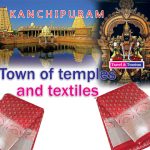Buried under the still and serene waters of the Shyam Sarovar near the town of Shyamlaji in Northern Gujarat lie the remains of the state’s oldestknown stupa and Buddhist vihara (monastery) complex. The archaeological site, known as Devnimori, has been submerged for more than half a century. Dated to the 4th century CE, at least, it was thankfully excavated before the waters of the Meshwo River flooded the plains and it yielded some staggering finds. The mound was locally known as ‘Bhoja Raja no Tekdo’ or ‘The Mound of Raja Bhoja’, and according to Bhil tribals who lived in the area, this was where a local prince from Bhuj in the Kutch region of Gujarat had set up camp in the 17th century CE. It was after this event that the mound came to be known as Bhoja Raja no Tekdo.
Over the centuries, the local population regularly raided the mound for bricks and, in the 1960-70s, the state Public Works Department got its engineers to check if the bricks could be used as a brickbat jelly in the construction of the Meshwo Dam that was to create the Shyam Sarovar! Smaller brick mounds were seen in the vicinity, one of which had a stone Shiva Linga on it. Preliminary archaeological exploration revealed a rich site although the archaeological complex was not entirely unknown. It was first noticed by P A Inamdar, an official of the princely state of Idar in Gujarat, in the early 1930s. Now the Department of Archaeology of MS University (MSU) of Baroda, decided to conduct serious excavations there in 1959-60 as part of a salvage archaeology project. When the team arrived in 1959, they found undulating terrain with a fairly large, sub-conical mound and other small mounds with bricks jutting out of them. Little did they know how amazing the site would turn out to be. Excavations continued here from 1960 to 1965.But what was such a monumental Buddhist stupa-monastic complex doing in Gujarat, much less in these parts?
Buddhism in Gujarat
Gujarat has always been associated with Jainism and there are thousands of Jaina monuments scattered all over the state. Not many know that before Jainism, and even alongside it, there was a very vibrant Buddhist period in Gujarat. There are a number of rock-cut Buddhist caves scattered all over Saurashtra and even on the mainland. Sadly, there is little exposure and although there could be a fabulous Buddhist trail in Gujarat, there is none. Buddhism made an appearance in Gujarat as early as the 1st-2nd century BCE and maintained a presence in this region till the 8th-9th century CE. Multiple Buddhist sites like Girnar, the Uparkot (Junagadh) Caves and Talaja Caves, among many other such sites, are silent reminders of a vibrant phase when traders flocked here and important trade routes cut across from the hinterland to the ports of Bharuch, Kamrej (Surat), Khambhat, Gogha, Prabhas Patan, Dwarka and Bhuj.
Of Trade & Faith
The site of Devnimori was situated on the banks of the Meshwo River and was around 2 km from the ancient town of Shyamlaji, located on a very important trade route leading from Gujarat into the Mewar region of present-day Rajasthan, which was rich in minerals and metals. The temple of Shyamlaji, a Hindu temple, was also very well-known from the 6th century CE and this has been an important pilgrimage town. Even today, it lies on the main NH 8 highway, which connects Mumbai to Surat, Vadodara, Ahmedabad, Udaipur, Ajmer and Jaipur, and ultimately Delhi. It is the single busiest four-lane highway in India and is actually based on a trade route that dates back to the 2nd century BCE, if not earlier.
As the town of Shyamlaji grew in modern times, it faced a great paucity of water and, in the early 1920s, a dam on the Meshwo River was proposed. This project never really took off till 1945 and it was after Independence that the Gujarat government took up the project in earnest. Sadly, the archaeological site which lay in the valley of the Meshwo River was destined to be submerged, and the MSU team was called in to investigate before that was to happen.
Explosive Finds
Excavations at Devnimori revealed an enormous Buddhist religious complex consisting of a much-looted brick stupa (evident from the missing bricks and their reuse in local structures) and the foundations of a large vihara or monastic complex. There was a large sharirika stupa (one that contains the physical remains of the Buddha or a Buddhist monk) and numerous smaller uddeshika (votive) stupas around it.
There were two rectangular viharas and an apsidal temple at the complex too. What was most amazing was that excavations at the stupa revealed an undisturbed reliquary, which could be dated to the Kshatrapa period, i.e. between the 3rd and 4th century CE. The monastic settlement had prospered for three, perhaps four centuries (or even a little longer), before being abandoned. The main vihara had been enlarged twice during this time and some repairs/enlargement seem to have been carried out on the stupa too. The lesser vihara had also been enlarged at a later time.
Alongside the Buddhist complex there appeared to have been a Shaivaite temple which had coexisted. This Buddhist-Hindu joint worship at a single site is the first of its kind known to us. The site was finally abandoned in the 9th century CE. The religious complex was dependent on the nearby Early Historical town, which lies buried under the Medieval town of Shyamlaji, which was built in the 15th century CE. Luckily, the chronology of the site could be positively fixed on the basis of ceramics, coins, inscriptions and the archaeological stratigraphic sequence. The most important finds in this regard were amphorae sherds, and polished red ware and stamped ware, which excavators are quite sure were of Roman origin. Coins too were found. These were essentially Kshatrapa coins with a few subsequent coins of the Maitraka Dynasty of Vallabhi (493- 776 CE) and a few local, uninscribed, early Indo-Sassanian issues. Surprisingly, no Gupta coins were found at Devnimori. The main stupa definitely dates to the 4th century CE as a pot found buried under the reliquary in the stupa revealed eight coins of the Kshatrapas. The most recent of these belonged to Kshatrapa ruler Vishwasena, who ruled from 292-304 CE. Thus, the reliquary could not be younger than the turn of the 4th century CE.
The reliquary has been assigned to Rudrasena, according to its inscription but the problem is that there were a number of Kshatrapa rulers with this name, and the best match is Mahakshatrapa Rudrasena III, who ruled from 348-378 CE. His was a long and possibly stable reign, and it makes sense that it was he who built the stupa. Thus, although the site appears to have started in a slightly earlier period, the Mahastupa dates to some time after the middle of the 4th century CE. The palaeography of the Kshatrapa Brahmi characters inscribed on the reliquary also seems to agree with this. The Mahavihara predates the Mahastupa, and the excavators believe that it was enlarged when the Mahastupa was built. This points to a very flourishing Buddhist community in Gujarat in the 4th century CE. Interestingly, the Mahavihara has revealed images of two Hindu deities, ie Vishnu and Mahishasura Mardini, dateable to no later than the 8th century CE. This suggests that the terminal phase at Devnimori was either one of syncretic worship or where Buddhists had been replaced by Hindus.
The Mahastupa has two very clear phases of construction, or construction followed by reconstruction. The stupa had two square plinths, one on top of the other. The lower plinth doubled as a brick-paved pradakshinapatha (circumambulation path). The plinths had niches with short pilasters, and above them was the round drum of the stupa. Within the pilastered niches once sat a number of Buddha statues. Above the niches were three rows of moulded and decorated bricks. The lower platform had 11 niches on each side and the upper platform had 10.
The upper platform was badly damaged and no niche has survived intact. Seventeen dhyan mudra images of the Buddha have been recovered from the site. Interestingly, they are not of the Mathura or Gupta styles but are a style heavily influenced by the Gandharan style. They are not truly Gandharan and can be safely called the ‘Kshatrapa-style of Buddha images’.
At some point, many of the Buddha statues were enclosed within the stupa as were the broken fragments of decorative bricks. This is difficult to explain but thanks to this, a number of the Buddha statues are incredibly well preserved. The plan and shape of the stupa are highly reminiscent of the Gaz Dheri Stupa in the North West Frontier Province in present-day Pakistan and the pilasters and pilastered niches are also almost identical.
Within the stupa, the archaeologists found two stone reliquaries, one of which appears semi-finished and has only ash and earth in it. The second one, which is made of steatite and bears three inscriptions in 4th century CE Kshatrapa Brahmi script, is exquisitely finished. It had a cylindrical copper jar inside it, a small bottle and fragments of very well-preserved silk cloth. The cloth had been preserved so well due to the copper oxides that resulted from corrosion of the copper within, and thanks to the outer corrosion which sealed the jar. Inside the small bottle was some ash – the sharirika remains.
The inscription records that the stupa had been built by two monks, Agnivarman and Sudarshana, at Pasantikapali (the original name of Devnimori). It says the reliquary was an abode of the relics of Dashabala (one of the names by which the Buddha is known). This explosive piece of writing says that this is one of the original relics of the Buddha himself, a claim impossible to prove or disprove. It goes on to say that the casket was prepared for the prosperity of the Dhamma and the Sangha. The inscription goes on to say that the casket was made of precious stone (greenish slate) and that it was placed there by Varaha son of Sena.
The lid has a further inscription from the Pratityasamutpada, a famous piece of Buddhist scripture, which says that “all Dhammas arise in dependence on other Dhammas, and for each Dhamma to exist and survive all must do so”.
The reliquary is sadly not publicly exhibited and is kept locked at the MSU Department of Archaeology.
As if all this was not enough, the site of Devnimori had one more amazing artefact to throw up. While digging for the dam in the river bed, the PWD team discovered a beautiful bronze image of Atlantes (Atlas), which is most definitely of Graeco-Roman origin and could only have come here thanks to the Indo-Roman trade of the time. It further points to the importance of the site and its foreign links. Devnimori is the only brick stupa-vihara complex known to us, to this day, from Gujarat. A similar vihara was recently excavated at Vadnagar in Gujarat by the Archaeological Survey of India and the report is keenly awaited by the archaeological fraternity. Sadly, the site of Devnimori is lost forever under the waters of the Shyam Sarovar and the relics of the Buddha languish under lock and key along with other artefacts from the site. All we can see of this important site is a tall metal pole embedded within the reservoir, to mark the location of the stupa, and colourful Buddhist flags tied by devotees fluttering from it.

















Add Comment